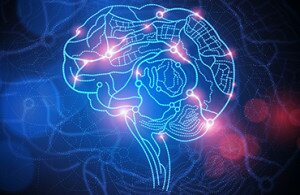- Understanding Addiction
- What are Behavioral Addictions?
- DSM-V Classification of Addiction
- Gambling Disorder
- General Classification of Addiction
- Neurological Characteristics of Behavioral and Substance Use Disorders
- The Difference Between Behavioral Addictions & Drug Addictions
- Similarities Between Behavioral Addictions & Drug Addictions
- Simplifying Addiction
- References
Behavioral Addictions vs. Substance Addictions: Are They the Same?
The short answer is, "well, they might be." There is some evidence that behavioral addictions share common biological and behavioral characteristics as substance addictions.
However, the current limited evidence has prevented behavioral addictions from being included in the Diagnostic and Statistical Manual of Mental Disorders, 5th Edition (DSM-V), with the exception of Gambling Disorder (see "DSM-V Classification of Addiction" section).
Understanding Addiction
The term 'addiction' and how it is used has been the subject of controversy for quite some time, which likely stems from the fact that the concept itself is rather difficult to define. For example, some believe that the most accurate and reliable way to distinguish a person who is addicted from one who is not is by assessing
how much and
how often the individual uses substances or engages in potentially addictive behavior.
Alternatively, others posit that addictions can be defined by a distinct pattern of behaviors related to obtaining a substance or activity, or a distinct set of responses when no longer able to engage in that substance or activity (see "DSM-V Criteria" section).
- For instance, when compared to those who are not addicted, removing access to the substance or behavior will trigger obsessive preoccupation and obdurate pursuits of the substance or behavior, even in the face of adverse consequences. [1]
- Despite ongoing debate about the most accurate definition of how the disorder manifests, most agree that dependence - whether it be psychological or physical dependence - is foundational to the classification of addiction disorders. [2,4]
In other words, the individual continues to engage in the same behavior despite persistent consequences.
- Once manifested, addictions can look very different across individuals in terms of both symptom presentation (i.e., alcohol-related, drug-related, and behavioral-related) and negative consequences from the disorder (i.e., financial difficulty as the result of gambling addiction in contrast to liver cirrhosis as the result of alcohol addiction). [1]
- Nonetheless, behavioral addictions and substance addictions both share the same association with changes in the neural pathway of the reward system in the brain. [19, 20]
- Similar neurocognitive deficits, like executive functioning, have also been identified between both disorders of substance addiction and non-substance-related addiction. [21]
What are Behavioral Addictions?
Similar to substance-related addiction, behavioral addiction is a disorder that
affects the neural circuitry of the brain's reward system. [9, 19, 20] It is typically
characterized by the compulsive, repetitive involvement in a rewarding non-substance-related behavior, despite consistent adverse consequences. [1]
Thus, the individual becomes pathologically focused on pursuing reward from engaging in the behavior and/or achieving relief from distress through the behavior. The individual will struggle with refraining from the behavior, experience intense cravings and have difficulty resisting, and will have limited awareness of the problems that have emerged as a result of their behavioral addiction. [2, 4] There has been some suggestion that addiction can develop with any activity, behavior, substance, or object that provides the individual with reward through sensations of pleasure.
Examples of behavioral addictions include:
Therapists are Standing By to Treat Your Depression, Anxiety or Other Mental Health Needs
Explore Your Options Today
Ad
- Gambling
- Sex
- Technology (internet, television, videogames)
- Pornography
- Shopping
- Exercise
The Diagnostic and Statistical Manual of Mental Disorders, 5th Edition (DSM-V) only classifies gambling, but not other behavioral addictions, as an addictive disorder. This is because there is insufficient evidence at this time to group other behavioral disorders into the same category as substance abuse disorders. Future editions of the DSM might look different in regards to including these disorders.
DSM-V Classification of Addiction
The revised DSM-V was finally published in 2013 and now includes the updated category of "Substance-related and Addictive Disorders," replacing the outdated category, "Substance-related Disorders," from the DSM-IV-TR. [2] While many behavioral addictions were considered for inclusion by the committee, only Gambling Disorder was ultimately chosen. This disorder was incorporated under the Non-Substance Related Disorders category of Substance-Related and Addictive Disorders. [2, 12]
Gambling Disorder
Gambling Disorder [2] - Characterized by compulsive and problematic gambling behavior that leads to significant impairment in functioning or distress. In order to meet criteria, the individual must exhibit four (4) or more of the following symptoms over the course of 12 months:
- Need to use increasing amounts of money in order to achieve desired level of excitement.
- Is restless or excessively irritable when attempting to control or abstain from gambling.
- Repeated unsuccessful attempts made to control, reduce, or abstain from gambling.
- Regularly preoccupied with gambling.
- Seeks out gambling in order to cope with feelings of distress.
- Regularly attempts to 'get even' by returning to gamble after losing large quantities of money.
- Exhibits erratic behavior, such as lying in order to minimize or conceal gambling involvement.
- Impairments noted in terms of interpersonal relationships, functioning at work, or performance in school.
- Is reliant on others financially as the result of gambling.
General Classification of Addiction
For reference, these are some of the general criteria for classifying a Substance Use Disorder [2]:
- The individual takes the substance in larger amounts or over a longer period of time than was originally intended.
- The individual expresses a persistent desire to cut down or regulate use with unsuccessful attempts.
- The individual spends excessive time obtaining the substance, using the substance, or recovering from its effects.
- Craving: an intense desire or urge, especially in certain contexts (e.g., being in the same environment one typically uses the substance).
- The individuals continues to use despite persistent or recurrent social or interpersonal problems.
- Impaired social, occupational, or recreational ability.
- Risky use of the substance.
- Tolerance and withdrawal symptoms.
Read more information on Diagnostic Criteria for specific Substance Use Disorders, including Alcohol, Caffeine, Cannabis, Hallucinogens, Inhalants, Opioids, Sedatives, Hypnotics, and Analytics, Stimulants, and Tobacco.
You can see how many of the criteria overlap between the DSM-V gambling (behavioral) disorder and DSM-V substance abuse disorder.
One of the conditions reviewed by the committee for inclusion in the DSM-V, Internet Addiction Disorder, involved internet-related addictive behaviors. During the review, concerns were raised regarding the lack of empirical evidence for the condition, impeding the ability to define specific diagnostic criteria for the disorder. [13] As such, this condition was given the classification of Internet Gaming Disorder and included in the appendix focused on conditions requiring further study. [2, 12]
Neurological Characteristics of Behavioral and Substance Use Disorders
It wasn't until 2011, when the American Society of Addiction Medicine (ASAM) announced changes to the definition of addiction, that ideas about the underlying mechanism(s) of addiction were able to extend beyond the confined view that substances were at the heart of the condition. [14] This opened the door for new conceptualizations of the disorder.
Currently, addiction is defined as a primary and chronic disease of the brain circuitry that is responsible for modulating motivation,
reward, and memory. [15, 16]
- Nonetheless, the development of addiction likely involves more than simply the reward pathway within the brain.
- For instance, evidence has suggested that the areas of the brain governing the control of impulses and judgment function differently in individuals suffering from addiction, as compared to their healthy counterparts. [6, 7]
- This can account for why individuals with addiction continue to engage in a behavior, despite experiencing cumulative adverse consequences as a result. [1]
- Other areas of the brain implicated in the development of addiction are those that control emotional learning, motivation, acquiring and maintaining new behaviors, and reward anticipation. [6,7]
Our understanding of reward and related brain pathways in behavioral addictions is still in its early stages. More research is needed to determine the overlapping and distinct characteristics, including more clearly delineate genetic contributions between behavioral addictions and substance-related addictions. [16, 17]
The Difference Between Behavioral Addictions & Drug Addictions
As discussed earlier in this article, once manifested, addiction disorders may vary widely in terms of the focus of the symptom presentation across individuals, depending on the source of the addiction. [1] Moreover, addiction to a substance carries along with it a unique set of risks not seen in behavioral addictions, defined be the way that particular substance impacts the individual's physical health. Addictive substances have differential effects on both the brain and body, which results in diverse long-term health outcomes across each addiction disorder. [5-7]
Similarities Between Behavioral Addictions & Drug Addictions
There are a number of common characteristics between behavioral and substance use addictions: [11-13]
- Most significantly, they share the same general definition of becoming obsessively preoccupied with an activity, object, or substance, and will go to great lengths to avoid feelings of discomfort as the result of withdrawal from the substance, removal of the object, or cessation of the activity. [1]
- Individuals suffering from any type of addiction will exhibit signs of being unable to control their own behavior, are unable to refrain from their addictive behavior even though they want to, and deny the presence of any difficulties as the result of their behavior or use of the substance. [2, 4]
- Individuals with addiction will continue to engage in the behavior or use the substance, even though it results in a continued accumulation of problems and negative outcomes. [1]
In general, any activity that has become the primary focus of an individual's daily life to the exclusion of other activities or that has begun to cause the individual harm (either psychological, physical, or social) can be considered an addiction.
Simplifying Addiction
A simple way to define addiction, whether substance-related or behavioral, is: "repeated involvement with anything, despite excessive costs, because of craving." [18]
Or to simplify it even further, the three components of addiction include: "anything," "excessive," and "craving." [18]
References
- 1. Naim-Fell J, Zangen A. Addiction. Handb Clin Neurol 2013;116:613-630.
- 2. American Psychiatric Association. Diagnostic and statistical manual of mental disorders (5th ed., text revision). 2000; Arlington, VA: American Psychiatric Association.
- 3. Widyanto L, McMurran M. The psychometric properties of the internet addiction test. Cyberpyschol Behav. 2004;7:443-500.
- 4. World Health Organization. The ICD-10 classification of mental and behavioral disorders: Clinical descriptions and diagnostic guidelines. 1992; Geneva, World Health Organization.
- 5. Ozburn AR, Janowsky AJ, Crabbe JC. Commonalities and distinctions among mechanisms of addiction to alcohol and other drugs. Alcohol Clin Exp Res 2015;39(10):1863-1877.
- 6. Kelivas PW, Volkow ND. The neural basis of addiction: A pathology of motivation and choice. Am J Psychiatry 2005;162:1403-1413.
- 7. Sweitzer MM, Donny EC, Hariri AR. Imaging genetics and the neurobiological basis of individual differences in vulnerability to addiction. Drug Alcohol Depend 2012;123(Suppl 1):S59-71.
- 8. Karoly HC, York-Williams SL, Hutchison KE. Clinical neuroscience of addiction: Similarities and differences between alcohol and other drugs. Alcohol Clin Exp Res 2015;39(11):2073-2084.
- 9. Nutt DJ, Lingford-Hughes A, Erritzoe D, Stokes PR. The dopamine theory of addiction: 40 years of highs and lows. Nat Rev Neurosci 2015;16(5):305-312.
- 10. Stone AL, Becker LG, Huber AM, Catalano RF. Review of risk and protective factors of substance use and problem use in emerging adulthood. Addict Behav 2012;37(7):747-775.
- 11. Alavi SS, Ferdosi M, Jannatifard F, Eslami M, Alaghemandan H, Setare M. Behavioral addiction versus substance addiction: Correspondence of psychiatric and psychological views. Int J Prev Med 2012;3(4):290-294.
- 12. Potenza MN. Should addictive disorders include non-substance-related conditions? Addiction 2006;101:142-151.
- 13. Grant JE, Potenza MN, Weinstein A, Gorelick DA. Introduction to behavioral addictions. Am J Alcohol Abuse 2010;36(5):233-241.
- 14. American Society of Addiction Medicine. The voice of addiction medicine. 2012.
- 15. Piper ME. Withdrawal: Expanding a key addiction construct. Nicotine Tob Res 2015;17(12):1405-1415.
- 16. McClure SM, Bickel WK. A dual-systems perspective on addiction: Contributions from neuroimaging and cognitive training. Ann N Y Acad Sci 2014;13(27):62-78.
- 17. Ramoz N, Gorwood P. A genetic view of addiction. Med Sci 2015;31(4):432-438.
- 18. Horvath, A. T. (2004). Sex, Drugs, Gambling, & Chocolate: A Workbook for Overcoming Addictions (2nd Edition). Impact Publishers: Atascadero, CA.
- 19. Nestler, E. J. (2005). Is there a common molecular pathway for addiction?.Nature neuroscience, 8(11), 1445-1449.
- 20. Comings, D. E., & Blum, K. (2000). Reward deficiency syndrome: genetic aspects of behavioral disorders. Progress in brain research, 126, 325-341.
- 21. Goudriaan, A. E., Oosterlaan, J., De Beurs, E., & Van Den Brink, W. (2006). Neurocognitive functions in pathological gambling: a comparison with alcohol dependence, Tourette syndrome and normal controls. Addiction, 101(4), 534-547.
As advocates of mental health and wellness, we take great pride in educating our readers on the various online therapy providers available. MentalHelp has partnered with several thought leaders in the mental health and wellness space, so we can help you make informed decisions on your wellness journey. MentalHelp may receive marketing compensation from these companies should you choose to use their services.
MentalHelp may receive marketing compensation from the above-listed companies should you choose to use their services.
Ad



